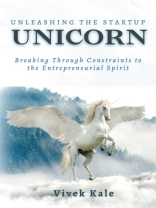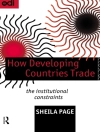It is well known that high-tech startups need to innovate to survive, yet the failure rate for innovation is shockingly high . Nearly three out of four new products or services, i.e., their startups, miss their revenue and profit goals–or fail entirely.
It’s a misconception that high-tech startups fail only because of the failing products or finances. The failures could also be because of erroneous choice of technology platforms, development teams or methodology, or even the project execution. Accordingly, this book takes a holistic view of a startups’ aesthetics that enables it to become attractive for all stakeholders especially investors in all aspects of its operations at all stages of its lifecycle.
This book:
- Looks at aspects of venture capital financing and what investors look for in a contemporary startup.
- Shows how only an overarching aspiration for a startup to become a Unicorn is sufficient to explain the typical characteristics of legendry Silicon Valley Unicorns like Google, Facebook, Linked In, and Twitter.
- Covers major application areas of current/future interest, namely, intelligent systems, intelligent assistants, wireless sensor networks, Internet of Things (Io T), and blockchain systems.
- Introduces the contemporary skills-set in demand for Startups.
To succinctly cover all aspects of a contemporary startup, Unleashing the Startup Unicorn is organized to reflect the natural grouping of competencies that are essential for entrepreneurial ventures–from conception to successful exit. To understand and analyze these competencies, the book uses an extended 9S model inspired by the pioneering Mc Kinsey 7S model.
Despre autor
Vivek Kale has more than two decades of professional IT experience during which he has worked with consulting organizations like TCS, Tata Unisys (now merged with TCS), i-flex solutions (now merged with Oracle Corp.), Syntel US and a couple of startup businesses. He has handled and consulted on various aspects of enterprise-wide information modeling, enterprise architectures, business process re-design, and, e-business architectures.He also has industrial experience having worked as Group CIO of Essar Group (now Arcelor Mittal Nippon Steel (AM/NS India) the steel/oil & gas major of India, as well as, Raymond Ltd. the textile & apparel major of India. He is a seasoned practitioner in enhancing business agility through digital transformation of business models, enterprise architecture and business processes, enabling the Process-Oriented Enterprise, and, enhancing IT-enabled enterprise intelligence (EQ).He is author of Inverting the Paradox of Excellence: How Companies Use Variations for Business Excellence and How Enterprise Variations Are Enabled by SAP, Agile Network Businesses and Digital Transformation of Enterprise Architecture.












